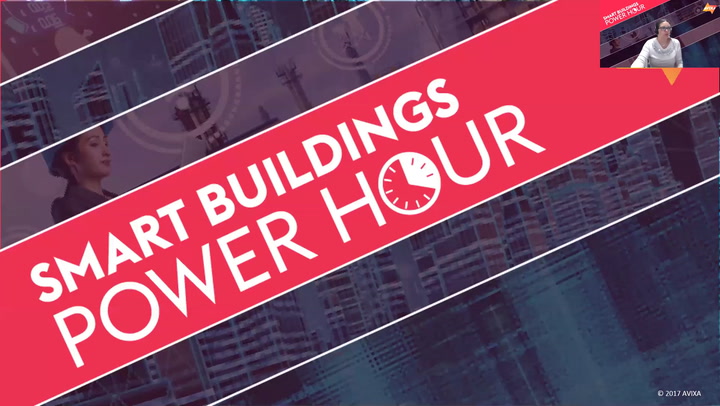
Does Your Office Need a Smart Space?
Technology has revolutionized the workplace, but many businesses haven’t kept up. From video conferencing issues and disjointed AV systems to underused meeting rooms and hard-to-find available spaces, daily inefficiencies continue to disrupt workflows and drain productivity. That’s where smart spaces come in.
These intelligent, interconnected office environments use technology to streamline collaboration, eliminate friction, and support how people work. So, does your organization need a smart space? Let’s define what a smart space is, how the concept has evolved, its features and benefits, and how to assess whether it’s the right fit for your team.
What is a Smart Space?
A smart space is a physical environment enhanced by connected technologies that improve how people interact, collaborate, and use the space. These environments are intuitive, responsive, and data-driven, seamlessly integrating AV systems, environmental sensors, scheduling tools, and mobile controls. Smart spaces bridge people and technology across a wide range of systems, including:
- Intelligent Meeting Rooms: AI-driven cameras track speakers while beamforming microphones ensure crystal-clear audio for all participants.
- Dynamic Environmental Controls: Lighting and climate settings automatically adjust based on occupancy and time of day, enhancing comfort and saving energy.
- One-Touch or Voice-Activated Meeting Starts: Launch meetings effortlessly with a single tap or voice command, streamlining setup and reducing delays.
- Real-Time Digital Signage: Displays outside meeting rooms show real-time availability and automatically release unused spaces.
- Occupancy Sensors: Data from sensors reveals how spaces are used, enabling smarter planning and the transformation of underused areas.
- Smart Room Booking Systems: Simplify reservations, prevent scheduling conflicts, and reduce frustration with intuitive booking tools.
- Integrated AV Systems: Enable seamless content sharing and communication across in-person and remote teams, supporting hybrid work models.
- Centralized Control Platforms: Give IT and facilities teams unified control over AV, lighting, HVAC, and security systems from a single dashboard.
- Environmental Sensors: Monitor air quality, lighting, and temperature to maintain comfort and support sustainability efforts.
- Touchless and Voice Controls: Enhance hygiene and user convenience by reducing physical contact with shared devices.
Together, these smart technologies create workplace environments that are adaptive, efficient, and user-centric, empowering organizations to support their teams and meet the demands of the modern workplace.
The Benefits of Smart Spaces in the Workplace
Smart spaces create a foundation for more productive, efficient, and satisfying work. By removing bottlenecks and improving workplace interactions, they enable employees and teams to get more done through:
- Improved Collaboration: Smart spaces integrate AV tools, conferencing platforms, and content-sharing solutions to support seamless collaboration between in-person and remote participants.
- Increased Efficiency: Automated systems and intuitive controls eliminate wasted time spent setting up meetings, adjusting settings, or troubleshooting tech issues.
- Better Use of Space: With real-time data on space usage and occupancy, organizations can optimize floor plans, consolidate underused rooms, and improve space allocation.
- Enhanced User Experience: Personalized settings, touchless interfaces, and consistent user experiences across rooms lead to smoother workflows and higher employee satisfaction.
- Energy Savings and Sustainability: Smart lighting, HVAC, and occupancy sensors reduce energy consumption, helping organizations meet their environmental goals without compromising comfort.
- Scalability and Flexibility: Smart space platforms are modular and adaptable, allowing businesses to expand or reconfigure their environments as needs evolve.
- Actionable Data and Insights: Analytics dashboards offer visibility into how technology and space are being utilized, enabling leaders to make informed decisions and enhance ROI.
- Positive Brand Perception: Smart spaces communicate that your organization values innovation, user comfort, and modern ways of working, enhancing your reputation with employees, clients, and recruits.

Key Features of a Smart Space
Smart spaces are composed of multiple interconnected components that work in harmony to create a seamless and responsive environment. Below are some of the core building blocks that make a smart space truly smart:
AV Integration
Audio and visual systems are center stage in any collaborative workspace. In a smart space, AV tools are unified through a central platform that allows users to control them with ease. From intelligent video conferencing and beamforming microphones to auto-tracking cameras and interactive displays, smart AV ensures every voice is heard and every presentation is seen, without complicated setups or frequent IT intervention.
Room Scheduling
Gone are the days of wandering the halls looking for an empty room. Smart scheduling systems show real-time availability, enable instant booking through touchscreens or mobile apps, and automatically release rooms when meetings are canceled or no-shows occur. This maximizes space usage and eliminates booking conflicts.
Environmental Sensors
Sensors are used to detect temperature, occupancy, air quality, and lighting levels. These systems can dim lights when natural light is strong, adjust ventilation based on CO₂ levels, and even regulate room temperature depending on how many people are present.
Unified Control Systems
A key benefit of a smart space is the ability to manage it from a single interface. Facilities teams can monitor and adjust AV systems, lighting, HVAC, and security from one dashboard—saving time, improving response, and enabling proactive support.
Digital Signage
Whether it’s room availability, safety information, or corporate messaging, digital signage enhances communication across your office. In smart spaces, this signage can update in real time and be customized for specific zones or departments.
Touchless and Voice Controls
Reducing the need for physical interaction with shared devices is both a convenience and a health measure. Smart spaces offer touchless solutions using mobile apps, sensors, and voice assistants to control everything from meeting start times to room settings.
Occupancy and Usage Analytics
Understanding how your space is used can lead to big savings. Smart spaces track usage patterns to help you make data-driven decisions about space planning, technology investment, and workplace design.
Seamless Connectivity
Robust and secure wireless infrastructure ensures that users can connect to meetings, content, and tools from any device—whether they’re at their desk, in a conference room, or working remotely.
How to Determine If Your Office Needs a Smart Space
Not every organization needs to overhaul its entire office, but many workplaces can benefit from incremental improvements. If you’re wondering whether it’s time to take the smart space leap, follow these steps:
- Identify Daily Pain Points: Document the frustrations your teams experience regularly, including tech issues, booking confusion, AV delays, or workspace underutilization.
- Assess Technology Gaps: Review your existing AV systems, scheduling platforms, and environmental controls. Are they outdated, disconnected, or underperforming?
- Engage Key Stakeholders: Bring in SMEs from IT, facilities, HR, and department leads to understand cross-functional needs and gain early buy-in.
- Evaluate Hybrid and Remote Work Demands: Consider how often your teams work remotely and whether your current setup supports easy, inclusive collaboration.
- Map Out Business Goals: Align your smart space strategy with broader goals like improving employee experience, boosting sustainability, or reducing operating costs.
- Pilot a Smart Room: Test smart space features in one conference room or area to evaluate performance, gather feedback, and demonstrate ROI.
- Partner with an Expert: Work with a systems integrator or smart space consultant who understands both the technology and the user experience. They can help you scale appropriately and avoid common pitfalls.
The Future of Smart Workspaces
As workplace technology continues to advance, smart spaces are poised to evolve in exciting new ways. The next generation of smart environments will go beyond automation and connectivity to offer truly intelligent, adaptive experiences. Here’s what’s on the horizon:
- Greater Personalization and Predictive Capabilities: Smart spaces will adjust automatically based on individual preferences, calendar entries, biometric data, and work styles.
- AI-Driven Adaptability: Artificial intelligence will allow environments to anticipate user needs, streamlining workflows and eliminating manual adjustments.
- Seamless Remote Collaboration: Cloud-based platforms will let remote team members interact with the physical workspace in real time, creating a more unified hybrid experience.
- Immersive Technologies: Augmented reality (AR) and other emerging tools will bring deeper levels of engagement to meetings and collaboration, extending smart space functionality beyond office walls.
- Blending Digital and Physical Worlds: As technology bridges the gap between physical presence and digital participation, smart spaces will support a fully integrated, human-centered workplace.
As the boundaries between digital and physical environments continue to fade, smart spaces will serve as the foundation for the truly hybrid workplace of the future.
Smart Spaces: The Takeaway
Smart spaces help organizations meet the demands of a distributed, digital-first workforce while maximizing space, reducing inefficiencies, and improving experiences for everyone. Whether you’re leading an enterprise IT department or managing a growing mid-size office, it’s worth considering how your workspace can better support your team and your organization’s goals.
Want to learn more? Check out AVIXA's Power Hour webinars on AVIXA TV!
Image credit: Getty/Brothers91







